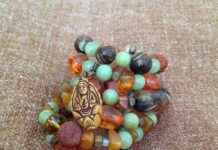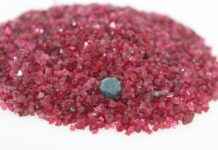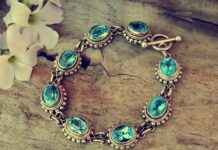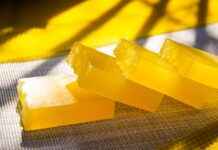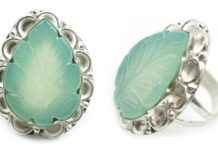This article delves into the increasing trend of investment jewelry, exploring its attraction, the dynamics of the market, and the various factors that contribute to its growing popularity among both investors and collectors.
The Rise of Investment Jewelry
In recent years, investment jewelry has seen a significant surge in interest as individuals look for tangible assets to diversify their portfolios. This trend is driven by several factors, including economic uncertainty, the desire for unique assets, and the emotional connection people have with jewelry. As a result, the jewelry market is evolving, with more investors recognizing the potential for long-term appreciation.
What Makes Jewelry a Good Investment?
- Intrinsic Value: Jewelry often contains precious metals and gemstones, providing a solid base value.
- Emotional Connection: Many pieces carry personal significance, adding to their appeal.
- Potential for Appreciation: Certain pieces can increase in value over time, making them attractive investments.
Historical Value of Jewelry
Understanding the historical significance of jewelry can greatly enhance its investment potential. Vintage and antique pieces often appreciate due to their rarity and craftsmanship, attracting collectors who value their history and artistry.
Market Trends in Antique Jewelry
Antique jewelry commands high prices due to its unique characteristics and craftsmanship. Current market trends indicate a growing interest in these pieces, with collectors actively seeking out items that reflect their historical significance.
Collectible Modern Jewelry
Modern jewelry designers are also gaining recognition, with contemporary pieces becoming valuable investments. Factors such as brand reputation and innovative designs contribute to their desirability among investors.
Factors Influencing Jewelry Value
Several key elements influence the value of jewelry, including the quality of materials, craftsmanship, and the brand’s reputation. Understanding these factors is crucial for making informed investment decisions.
How to Choose Investment Jewelry
When selecting jewelry for investment, careful consideration is essential. Investors should focus on quality, craftsmanship, and market demand to identify pieces likely to appreciate in value.
Evaluating Quality and Craftsmanship
Assessing the quality and craftsmanship of jewelry is vital for ensuring a wise investment. Look for details such as finishing, setting techniques, and overall design to gauge a piece’s value.
Understanding Market Demand
Market demand significantly impacts jewelry value. Trends and consumer preferences can shift, influencing which pieces are seen as desirable investments.
Risks and Considerations in Jewelry Investment
Investing in jewelry carries certain risks. Potential pitfalls include market volatility and challenges in determining authenticity, which investors must navigate carefully.
Market Volatility and Economic Factors
The jewelry market can be sensitive to economic fluctuations. Investors should be aware of how market volatility and economic downturns might affect their jewelry investments.
Authenticity and Appraisal Challenges
Ensuring the authenticity of jewelry is critical for investment success. Common appraisal challenges can arise, so understanding how to navigate these issues is essential.
The Future of Investment Jewelry
As interest in investment jewelry grows, it is important to stay informed about future trends. Emerging factors such as sustainability and technological innovations are likely to shape the market.
Emerging Trends in Sustainable Jewelry
Increasingly, sustainability is becoming a significant factor in jewelry investment. Eco-friendly practices are influencing consumer choices, making sustainable pieces more appealing.
Technological Innovations in Jewelry
Technology is transforming the jewelry industry. Innovations such as blockchain technology for verifying authenticity could significantly impact the future of investment jewelry.
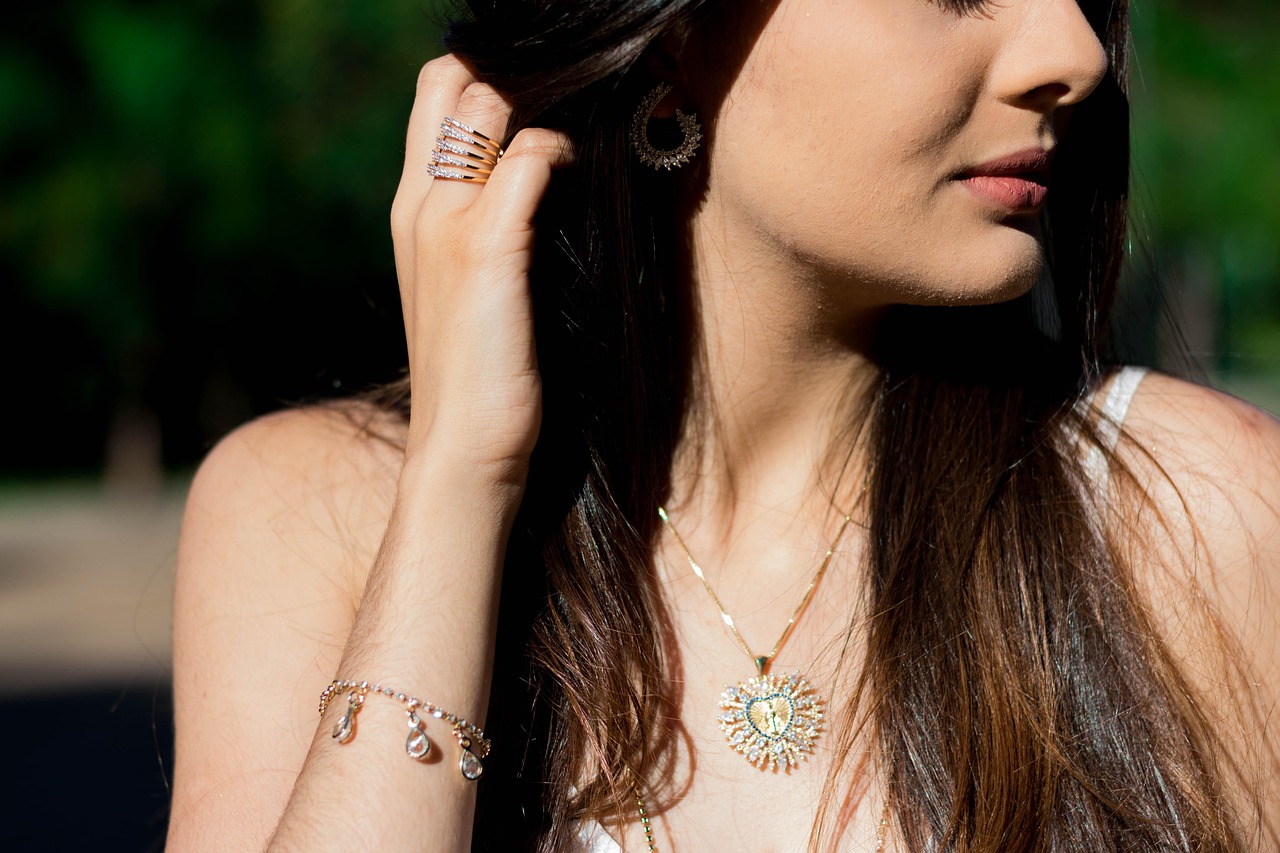
The Rise of Investment Jewelry
In recent years, investment jewelry has seen a significant surge in popularity as individuals increasingly seek tangible assets to diversify their portfolios. This trend reflects a broader shift in investment strategies, where traditional options like stocks and bonds are being complemented by physical assets that provide both aesthetic pleasure and financial security.
Several factors are driving this trend. Firstly, the global economic uncertainty has led many investors to look for safer havens for their wealth. Jewelry, particularly pieces made from precious metals and gemstones, is viewed as a stable investment that can retain or even appreciate in value over time. Secondly, the emotional connection that comes with jewelry makes it a unique asset; it is not just a financial investment but also a personal one, often tied to significant life events.
Moreover, the rise of social media and online marketplaces has made it easier for collectors and investors to access a broader range of jewelry options. Platforms dedicated to buying and selling fine jewelry have opened up new avenues for investment, allowing individuals to discover and acquire pieces that might have previously been out of reach.
Additionally, the influence of celebrity culture cannot be overlooked. High-profile figures often showcase exquisite jewelry, sparking interest and demand among fans and collectors. This has led to a greater recognition of certain brands and styles, further driving the investment jewelry market.
As the trend continues to evolve, it is crucial for potential investors to understand the implications of investing in jewelry. Factors such as market trends, authenticity, and craftsmanship play significant roles in determining the value of jewelry pieces. Therefore, a well-informed approach is essential for those looking to make their mark in the world of investment jewelry.
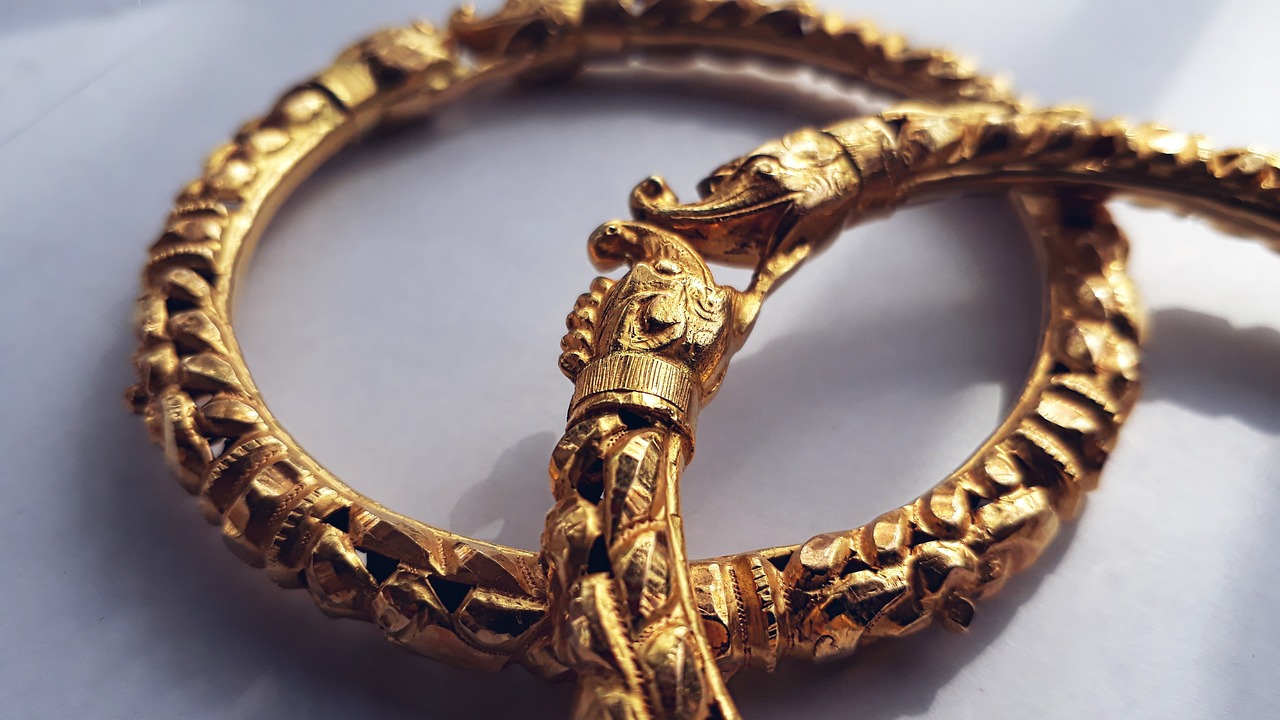
What Makes Jewelry a Good Investment?
Jewelry as an Investment: Unique Advantages
Investing in jewelry has gained traction among savvy investors and collectors alike. This trend stems from several unique advantages that jewelry holds as an investment vehicle. Primarily, jewelry encompasses intrinsic value, which is derived from the quality of materials, craftsmanship, and the reputation of the brand. Precious metals like gold and platinum, along with gemstones such as diamonds and sapphires, retain significant value over time, making them attractive options for investment.
Moreover, jewelry often carries an emotional connection that transcends its monetary worth. Many pieces are passed down through generations, serving as family heirlooms that not only hold sentimental value but can also appreciate significantly over time. This aspect of jewelry can enhance its appeal as an investment, as buyers are often willing to pay a premium for items that carry personal stories or historical significance.
Another critical factor contributing to the investment potential of jewelry is its potential for appreciation. The jewelry market can be influenced by various trends, including fashion shifts and celebrity endorsements, which can drive demand and subsequently increase prices. For instance, vintage pieces or those from renowned designers often see a surge in value, particularly if they are rare or in excellent condition.
In summary, the combination of intrinsic value, emotional connection, and potential for appreciation makes jewelry a compelling option for investors. As the market continues to evolve, understanding these advantages can help individuals make informed decisions when considering jewelry as part of their investment portfolio.
- Intrinsic Value: Quality materials and craftsmanship.
- Emotional Connection: Sentimental value and family heritage.
- Potential for Appreciation: Market trends and rarity.
Ultimately, investing in jewelry is not just about financial gain; it is also about the stories and memories that each piece carries.
Historical Value of Jewelry
Understanding the historical significance of jewelry is crucial for investors looking to enhance their portfolio. Jewelry, particularly vintage and antique pieces, carries a rich narrative that can significantly influence its investment potential. Over the years, the appreciation of these items has been observed, making them not just adornments but also valuable assets.
Antique jewelry often reflects the craftsmanship and artistry of its time, which can lead to increased demand among collectors. The rarity of these pieces plays a significant role in their value; as time passes, fewer original pieces remain available, driving up their worth. For instance, items from specific eras, such as the Victorian or Art Deco periods, are highly sought after due to their unique styles and historical context.
Moreover, the emotional connection that many people have with jewelry adds another layer to its investment appeal. For many, these pieces are not merely financial investments but also carry sentimental value, often passed down through generations. This aspect can further enhance their desirability and market value.
As we delve deeper into the market dynamics, it becomes evident that the historical context of jewelry influences current trends. Collectors are increasingly interested in pieces that tell a story or represent a specific cultural moment. This trend is leading to a surge in the prices of vintage jewelry, as buyers are willing to pay a premium for items with a rich history.
In conclusion, understanding the historical value of jewelry is essential for maximizing its investment potential. Vintage and antique pieces not only appreciate over time but also offer a unique combination of aesthetic beauty and historical significance, making them attractive options for investors looking to diversify their portfolios.
Market Trends in Antique Jewelry
Antique jewelry has always held a special place in the hearts of collectors and investors alike. Its rarity and exquisite craftsmanship often lead to high prices in the market. As we delve into the current trends, it is essential to understand what makes these pieces so desirable and what collectors actively seek.
One of the primary factors driving the market for antique jewelry is its historical significance. Pieces that tell a story or have a unique provenance are particularly sought after. Collectors often look for items that reflect specific eras, such as Art Deco or Victorian styles, as these pieces are not only beautiful but also carry cultural and historical weight.
Additionally, the condition of the jewelry plays a crucial role in its value. Well-preserved items with original features tend to attract higher bids at auctions. This has led to an increase in the demand for expert appraisals and restoration services, as collectors aim to maintain the integrity of their investments.
Another trend is the growing interest in sustainable practices within the antique jewelry market. Many collectors are now prioritizing pieces that are ethically sourced or that utilize recycled materials. This shift reflects a broader societal movement toward sustainability, influencing purchasing decisions and market dynamics.
Moreover, the rise of online platforms has transformed how antique jewelry is bought and sold. Digital auctions and online marketplaces provide greater access to a wider audience, allowing collectors to find rare pieces from around the world. This accessibility has contributed to the increasing popularity of antique jewelry as an investment.
In conclusion, the market trends in antique jewelry are shaped by a combination of historical significance, condition, sustainability, and digital accessibility. Collectors are not just looking for beautiful pieces; they are investing in items that resonate with their values and interests. As these trends continue to evolve, the antique jewelry market remains a vibrant and dynamic space for both collectors and investors.
Collectible Modern Jewelry
has emerged as a significant segment in the jewelry market, capturing the attention of both collectors and investors. Unlike traditional pieces, modern jewelry often reflects contemporary aesthetics and innovative designs, making it a unique investment opportunity. This article delves into the factors that contribute to the desirability of modern jewelry and its potential as a valuable asset.
One of the primary reasons for the increasing recognition of modern jewelry designers is their ability to blend artistry and craftsmanship with contemporary themes. These designers often draw inspiration from current trends, cultural movements, and personal experiences, resulting in pieces that resonate with today’s consumers. The emotional connection that buyers feel towards these pieces can significantly enhance their value over time.
Moreover, the exclusivity of modern jewelry plays a crucial role in its investment potential. Many contemporary designers produce limited editions or one-of-a-kind pieces, which can create a sense of urgency and desirability among collectors. As the supply diminishes, the value of these pieces is likely to appreciate, making them attractive investments.
Another factor contributing to the desirability of modern jewelry is the brand reputation. Established designers often command higher prices due to their recognition and the perceived quality of their work. Collectors and investors are more inclined to invest in pieces from reputable brands, knowing that their investment is backed by a strong market presence.
Furthermore, the rise of social media and online platforms has significantly increased the visibility of modern jewelry designers. This exposure allows them to reach a broader audience, enhancing their marketability and desirability. As more people become aware of these designers and their creations, the demand for modern jewelry continues to grow.
In conclusion, the appeal of collectible modern jewelry lies in its unique blend of artistry, exclusivity, and brand reputation. As this segment of the jewelry market continues to evolve, it presents exciting opportunities for investors seeking to diversify their portfolios with contemporary pieces that have the potential for appreciation.
Factors Influencing Jewelry Value
The value of jewelry is determined by a myriad of factors that can significantly influence its worth in the market. Understanding these elements is crucial for anyone considering jewelry as an investment. Below are some of the key factors that play a pivotal role in determining jewelry value:
- Material: The type of material used in jewelry is one of the most critical factors affecting its value. Precious metals such as gold, platinum, and silver are highly sought after due to their intrinsic value. Additionally, gemstones like diamonds, rubies, and emeralds can drastically increase a piece’s worth based on their quality, rarity, and size.
- Craftsmanship: The craftsmanship of a jewelry piece can greatly influence its value. Handcrafted pieces often carry a premium due to the skill and time invested in their creation. Intricate designs, attention to detail, and the reputation of the artisan can enhance the desirability and price of the jewelry.
- Brand Reputation: The brand behind the jewelry can also impact its value. Established brands with a strong reputation for quality and design often command higher prices. Collectors and investors are often willing to pay a premium for pieces from renowned designers or luxury brands.
- Provenance: The history of a piece, including its previous ownership and any notable events associated with it, can add to its value. Jewelry that has a rich history or was owned by a famous personality often sees a significant increase in worth.
- Market Demand: The current market demand for specific styles, materials, or brands can greatly affect jewelry value. Trends can change quickly, and pieces that are in vogue can see their value rise sharply, while those that fall out of favor may decrease in worth.
In conclusion, when investing in jewelry, it is essential to consider these factors carefully. Understanding how material, craftsmanship, brand reputation, provenance, and market demand interact can help investors make informed decisions and ensure their investment appreciates over time.

How to Choose Investment Jewelry
Choosing the right pieces for investment requires careful consideration. When it comes to selecting jewelry that is likely to appreciate in value, there are several key factors to keep in mind. This section provides practical tips to guide investors through the often complex world of jewelry investment.
- Research Market Trends: Understanding current trends in the jewelry market can significantly impact your investment choices. Look for pieces that are gaining popularity or have historical significance. Keeping an eye on fashion shows and auctions can provide insights into what styles and designers are trending.
- Assess Quality and Craftsmanship: The quality of materials and the craftsmanship of a piece are crucial indicators of its potential value. Look for jewelry made from high-quality metals such as gold or platinum, and examine the stones for clarity, cut, and carat weight. Well-crafted pieces often hold their value better over time.
- Consider Brand Reputation: Renowned brands often carry a premium due to their established reputation. Investing in pieces from reputable designers or brands can enhance your portfolio’s value. Research the brand’s history and its standing in the market.
- Evaluate Rarity and Uniqueness: Limited edition pieces or those with unique designs tend to appreciate more than mass-produced items. Rarity can significantly increase a piece’s desirability among collectors.
- Seek Professional Appraisals: Before making a purchase, consider having the piece appraised by a certified gemologist. This can provide an accurate assessment of its value and authenticity, ensuring that you are making a sound investment.
In conclusion, investing in jewelry can be a rewarding endeavor if approached with the right knowledge and strategy. By considering market trends, quality, brand reputation, rarity, and professional appraisals, investors can make informed decisions that enhance their portfolios and potentially yield significant returns over time.
Evaluating Quality and Craftsmanship
When it comes to investing in jewelry, quality and craftsmanship are paramount. These two factors not only influence the aesthetic appeal of a piece but also its long-term value. Understanding how to evaluate these elements can significantly enhance your investment decisions.
Quality in jewelry refers to the materials used, including the type of metal, gemstones, and overall construction. High-quality materials often come with certifications that attest to their authenticity and value. For example, diamonds should ideally have a grading report from a reputable laboratory to confirm their cut, clarity, color, and carat weight. Similarly, precious metals like gold and platinum should be stamped with their purity levels, such as 18K or 950, indicating their quality.
On the other hand, craftsmanship pertains to the skill and artistry involved in creating the jewelry piece. This includes the intricacy of the design, the precision of the setting, and the overall finish. Well-crafted jewelry often features smooth edges, secure settings for stones, and a polished surface that reflects light beautifully. When evaluating craftsmanship, look for signs of attention to detail, such as uniformity in design and the absence of visible flaws.
To assess these factors effectively, consider the following steps:
- Research the Brand: Established brands often have a reputation for quality and craftsmanship.
- Inspect the Piece: Examine it closely for any imperfections or irregularities.
- Seek Expert Opinions: Consult with jewelers or appraisers who can provide insights on quality and craftsmanship.
- Understand Market Trends: Stay informed about what is currently valued in the jewelry market.
In conclusion, investing in jewelry requires a keen eye for both quality and craftsmanship. By taking the time to evaluate these aspects, you can make informed decisions that contribute to a wise investment.
Understanding Market Demand
is essential for anyone looking to invest in jewelry. The value of jewelry is significantly influenced by market demand, which is shaped by trends, consumer preferences, and cultural shifts. This section delves into how these factors play a critical role in determining the investment potential of various jewelry pieces.
Market demand is often driven by current trends that capture the attention of consumers. For instance, the rise of vintage styles or the popularity of ethically sourced materials can lead to increased interest in specific types of jewelry. As trends evolve, so do consumer preferences, which can either enhance or diminish the value of certain pieces.
Furthermore, the cultural significance of jewelry can also impact its desirability. For example, during special occasions such as weddings or anniversaries, certain styles may see a surge in demand. This seasonal fluctuation can create investment opportunities for those who are knowledgeable about market cycles.
Another important aspect is the influence of social media and celebrity endorsements. When a popular figure showcases a particular jewelry style, it can lead to a rapid increase in demand. Investors who are attuned to these shifts can capitalize on emerging trends before they become mainstream.
Additionally, understanding the demographics of potential buyers is crucial. Younger generations may prioritize sustainability and ethical production in their purchasing decisions, which can shift the demand for certain types of jewelry. Investors should consider these factors when assessing the potential value of their jewelry investments.
In conclusion, market demand is a dynamic and multifaceted aspect of the jewelry industry that significantly influences value. By staying informed about trends, cultural shifts, and consumer preferences, investors can make more educated decisions, ultimately enhancing their investment potential.

Risks and Considerations in Jewelry Investment
Investing in jewelry can be an alluring prospect, but it is crucial to recognize that it is not without its challenges. This section aims to highlight the potential pitfalls and considerations that investors should keep in mind before making a purchase.
One of the primary risks associated with jewelry investment is market volatility. The value of jewelry can fluctuate significantly based on economic conditions, trends, and consumer preferences. Investors should be aware that what may be a popular piece today could lose its appeal tomorrow, leading to a decrease in value.
Furthermore, the authenticity of jewelry is a vital consideration. The market is rife with counterfeit items, and ensuring that a piece is genuine can be challenging. Investors should seek out reputable dealers and consider obtaining certifications from recognized organizations to validate the authenticity of their investments.
Another important factor is the appraisal process. Accurately assessing the value of jewelry can be complex, as it involves various elements such as craftsmanship, materials, and brand reputation. Investors must be diligent in obtaining professional appraisals to ensure they are making informed decisions.
Additionally, liquidity is a concern. Unlike stocks or bonds, which can be easily traded, selling jewelry can take time and may not yield the expected returns. Investors should consider how quickly they may need to liquidate their assets and whether they are prepared for potential delays.
In conclusion, while investing in jewelry can be a rewarding venture, it is essential to approach it with caution. By understanding the risks and taking proactive measures, investors can make more informed decisions that may lead to successful outcomes in the jewelry market.
Market Volatility and Economic Factors
The jewelry market is intricately linked to broader economic conditions, which can significantly influence investment decisions. Understanding how market volatility and economic downturns affect jewelry investments is essential for both collectors and investors.
Economic Conditions and Jewelry Investments
During times of economic stability, the demand for luxury items, including jewelry, tends to rise. Conversely, in periods of economic uncertainty, consumers often tighten their budgets, which can lead to a decrease in jewelry sales. This fluctuation can create a ripple effect on the investment value of jewelry.
Market Volatility
- Consumer Confidence: Economic downturns often lead to reduced consumer confidence, which can impact luxury purchases. When consumers are uncertain about their financial future, they may prioritize essential goods over luxury items.
- Investment Shifts: Investors may shift their focus from jewelry to more stable assets, such as stocks or real estate, during economic instability. This shift can result in a temporary decline in jewelry values.
- Supply Chain Disruptions: Economic challenges can disrupt the supply chain for precious metals and gemstones, affecting availability and pricing in the jewelry market.
Long-Term Considerations
While short-term market fluctuations can impact jewelry investments, it is essential to consider the long-term potential of jewelry as an asset. Historically, high-quality pieces, especially those with unique craftsmanship or historical significance, tend to appreciate over time, even amidst economic challenges.
Conclusion
In summary, the jewelry market is sensitive to economic conditions, and understanding these dynamics can help investors navigate potential risks. By keeping an eye on market volatility and making informed decisions, investors can better position themselves to capitalize on the enduring value of jewelry.
Authenticity and Appraisal Challenges
Ensuring the authenticity of jewelry is critical for investment. The jewelry market is filled with opportunities, but it also presents unique challenges, particularly when it comes to appraising the value of pieces. Investors must navigate a landscape where forgeries and misrepresentations can easily undermine their financial commitments. Understanding common appraisal challenges and how to effectively address them is essential for anyone looking to invest in jewelry.
One of the primary challenges in jewelry appraisal is the lack of standardized criteria. Unlike other investment assets, such as stocks or real estate, there is no universally accepted method for evaluating jewelry. This can lead to discrepancies in appraisals, as different appraisers may have varied opinions on a piece’s value. To mitigate this risk, investors should seek out appraisers who are certified and have a good reputation in the market.
Another significant issue is the difficulty in verifying authenticity. With the rise of advanced manufacturing techniques, counterfeit jewelry has become increasingly sophisticated. Investors must be vigilant and conduct thorough research before making a purchase. This includes checking for hallmarks, obtaining certificates of authenticity, and consulting with reputable dealers who can provide insights into the piece’s history and provenance.
Market fluctuations can also impact the appraisal process. Economic conditions can influence demand for certain types of jewelry, leading to changes in value that may not be immediately reflected in appraisals. Investors should stay informed about market trends and be prepared to reassess the value of their jewelry over time.
In conclusion, navigating the challenges of jewelry appraisal requires diligence and expertise. By choosing reputable appraisers, verifying authenticity, and staying informed about market trends, investors can make more informed decisions and protect their investments effectively.
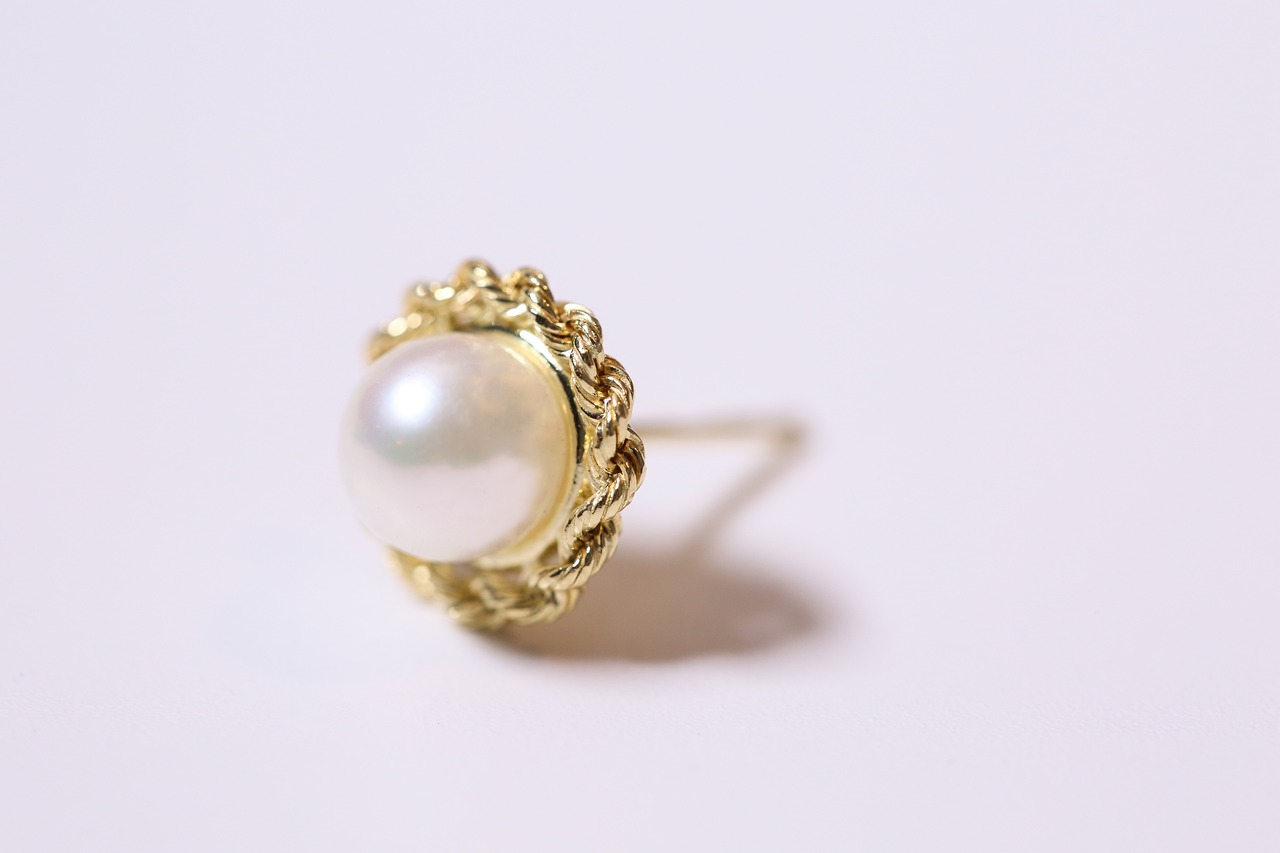
The Future of Investment Jewelry
is an exciting and evolving landscape as more individuals turn to jewelry as a viable investment option. This section delves into the anticipated trends and potential opportunities that may shape the market in the coming years.
As the demand for investment jewelry continues to rise, understanding the direction in which the market is heading becomes crucial for investors. Various factors are contributing to this growth, including a shift in consumer preferences towards unique and sustainable pieces, as well as the increasing recognition of jewelry as a tangible asset that can appreciate over time.
- Emerging Trends in Sustainable Jewelry: Sustainability is becoming a key consideration for many investors. Eco-conscious consumers are increasingly seeking out jewelry that is ethically sourced and produced. This trend not only reflects a growing awareness of environmental issues but also creates new investment opportunities in brands that prioritize sustainability.
- Technological Innovations in Jewelry: The jewelry industry is witnessing a technological revolution. Innovations such as blockchain technology are being utilized to verify authenticity and provenance, enhancing consumer confidence in their purchases. This technological shift could lead to a more transparent market, potentially increasing the value of well-documented pieces.
- Shifts in Market Demographics: The demographics of jewelry investors are changing. Younger generations are becoming more interested in jewelry as an investment, often driven by social media and influencer culture. This shift may lead to increased demand for modern and unique designs, impacting the types of pieces that are considered valuable.
Moreover, as the global economy fluctuates, investors are likely to seek out investment jewelry as a hedge against inflation and economic uncertainty. The intrinsic value of precious metals and gemstones makes them an attractive option during turbulent times.
In conclusion, the future of investment jewelry looks promising, with evolving consumer preferences, technological advancements, and demographic shifts shaping the market. Investors who stay informed about these trends will be better positioned to capitalize on emerging opportunities in this dynamic sector.
Emerging Trends in Sustainable Jewelry
Sustainability has emerged as a pivotal factor in the jewelry industry, significantly influencing consumer behavior and investment strategies. As awareness of environmental and ethical issues grows, consumers are increasingly drawn to jewelry that reflects their values. This shift not only impacts purchasing decisions but also shapes the investment landscape.
Many investors are now prioritizing eco-friendly practices when selecting jewelry pieces. This trend signifies a broader societal move towards sustainability, where individuals seek to support brands that are committed to ethical sourcing and environmentally responsible production methods. Jewelry that is crafted from recycled materials or ethically mined gemstones often carries a premium, reflecting its increased value in the eyes of conscious consumers.
Moreover, brands that adopt sustainable practices tend to foster stronger customer loyalty. Consumers are more likely to invest in jewelry from companies that demonstrate a commitment to reducing their carbon footprint and supporting fair labor practices. This loyalty translates into potential long-term value for investors, as these brands are likely to maintain relevance and demand in a shifting market.
| Factors Influencing Sustainable Jewelry Investment | Description |
|---|---|
| Ethical Sourcing | Jewelry sourced from suppliers that adhere to ethical practices. |
| Recycled Materials | Use of recycled metals and stones, reducing environmental impact. |
| Transparency | Brands that provide clear information about their sourcing and production processes. |
Investors should also be aware of the market demand for sustainable jewelry. As more consumers prioritize sustainability, the appreciation potential for eco-friendly jewelry increases. This creates a robust market for investors looking to capitalize on emerging trends.
In conclusion, the integration of sustainability into the jewelry industry is not just a trend; it represents a fundamental shift in consumer values and investment strategies. As the market evolves, those who embrace sustainable practices will likely find themselves at the forefront of a profitable and ethically responsible investment landscape.
Technological Innovations in Jewelry
have begun to transform the landscape of the jewelry industry, bringing forth new opportunities and challenges for investors and collectors alike. As technology continues to advance, it is crucial to understand how these innovations can affect the future of investment jewelry.
One of the most significant advancements is the implementation of blockchain technology. This technology provides a secure and transparent method for verifying the authenticity of jewelry pieces. By creating a digital ledger, blockchain allows buyers to trace the history of a piece, ensuring its origin and value. This is particularly important in the investment jewelry market, where authenticity is paramount.
In addition to blockchain, 3D printing is revolutionizing the way jewelry is designed and produced. This technology enables designers to create intricate and unique pieces with greater efficiency and lower costs. As a result, collectors can access a wider range of investment options, including limited-edition pieces that may appreciate significantly over time.
Another innovation is the rise of augmented reality (AR) and virtual reality (VR) technologies, which enhance the shopping experience. These technologies allow customers to visualize how a piece of jewelry will look on them without physically trying it on. This immersive experience can lead to increased consumer confidence and potentially higher sales, benefiting both retailers and investors.
Furthermore, the integration of artificial intelligence (AI) in market analysis is helping investors make informed decisions. AI algorithms can analyze trends, consumer preferences, and market dynamics, providing valuable insights into which types of jewelry are likely to appreciate in value. This data-driven approach can significantly reduce the risks associated with jewelry investment.
In conclusion, technological innovations are reshaping the jewelry industry in profound ways. From ensuring authenticity through blockchain to enhancing design capabilities with 3D printing, these advancements are creating new avenues for investment. As the market continues to evolve, staying informed about these technologies will be essential for anyone looking to invest in jewelry.
Frequently Asked Questions
- What is investment jewelry?
Investment jewelry refers to pieces that are purchased with the intention of appreciating in value over time. Unlike regular jewelry, these pieces are often made from high-quality materials and crafted by renowned designers, making them desirable for collectors and investors alike.
- Why is investment jewelry gaining popularity?
More people are looking for tangible assets to diversify their portfolios, and jewelry offers a unique blend of beauty and value. Additionally, the emotional connection many have with jewelry adds to its appeal, making it not just an investment but also a cherished item.
- What factors affect the value of jewelry?
The value of jewelry can be influenced by several factors, including the quality of materials used, the craftsmanship involved, brand reputation, and current market demand. Understanding these elements can help investors make informed decisions.
- How can I choose the right investment jewelry?
When selecting investment jewelry, consider the piece’s quality and craftsmanship, its historical significance, and current market trends. It’s also important to stay informed about consumer preferences to ensure your investment will appreciate over time.
- Are there risks involved in investing in jewelry?
Yes, investing in jewelry does come with risks, such as market volatility and potential economic downturns. Additionally, ensuring the authenticity of pieces can be challenging, so it’s crucial to conduct thorough research and possibly seek professional appraisals.


